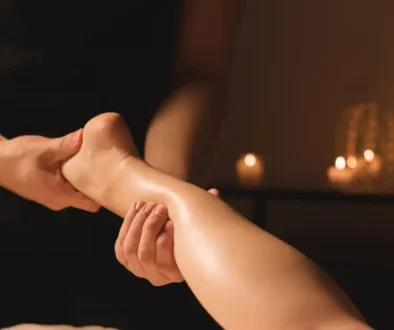Traditional Thai Massage
The Power of Touch: How Traditional Thai Massage Heals Body and Mind
Introduction
Traditional Thai Massage is far more than just an exotic wellness treatment. It is an ancient healing art that combines movement, acupressure, and energy work. As an expert in holistic health and Eastern body therapies, I want to explain why Thai massage deserves its place in modern health culture – and who it is especially suitable for.
What is Traditional Thai Massage?
Traditional Thai Massage – in Thai Nuad Phaen Boran (“ancient healing touch”) – dates back over 2,500 years. Its roots lie in a blend of Ayurvedic medicine, Chinese acupressure theory, and Buddhist mindfulness.
Unlike classic Western massage, Thai massage is performed without oil and usually takes place on a floor mat. The therapist uses not only their hands but also elbows, knees, and even feet to treat the entire body.
The treatment is based on the concept of energy lines (Sen), similar to the meridians in Chinese medicine. The goal is to release blockages, stimulate the flow of energy, and activate the body’s self-healing powers.
How Does Thai Massage Affect the Body and Mind?
Physical Effects:
-
Muscle relaxation: Targeted pressure and stretching release even deep-seated tension.
-
Improved mobility: The massage incorporates passive yoga-like stretches to mobilize joints and fascia.
-
Better circulation: The rhythmic alternation of pressure and release boosts microcirculation.
-
Lymphatic stimulation: The body is supported in detoxification and regeneration.
Mental Effects:
-
Deep relaxation: Many people describe a state of “awake calmness,” similar to meditation.
-
Stress reduction: The therapist’s mindful approach calms the nervous system.
-
Emotional balance: The holistic touch often brings harmony – especially in times of inner restlessness or sleep issues.

Traditionelle Thai Massage
“Thai massage treats not only the body, but also what lies in between – life energy.”
Who is Thai Massage For?
Thai massage is suitable for a wide range of people – from stressed office workers to performance athletes. It’s especially helpful for:
-
People with tension in the back, neck, or shoulders
-
Individuals suffering from headaches or migraines
-
Anyone experiencing stress, nervousness, or insomnia
-
People with sedentary lifestyles looking to counteract poor posture
-
Physically active individuals seeking recovery and mobility
Who should be cautious?
In cases of acute illness, osteoporosis, fresh injuries, or pregnancy, consultation with a doctor is advisable. A professional massage therapist will typically assess this beforehand.
What to Expect in a Professional Thai Massage
While techniques may vary slightly depending on the therapist or style, most sessions follow this general structure:
-
Brief intake session
To understand your complaints and tailor the treatment individually. -
Massage on a floor mat
You’ll remain fully clothed in comfortable attire as the entire body is treated. -
Rhythmic work along energy lines
Pressure is applied using thumbs, palms, elbows, or even feet – always mindfully and in sync with breathing. -
Passive stretching (similar to yoga)
These stretches enhance flexibility and body awareness – often a highlight of the session. -
Post-treatment rest & hydration
A short recovery period is important. Also: drink plenty of water to help flush out released metabolic waste.
Real-World Experiences & Scientific Studies
Numerous studies confirm the effectiveness of Thai massage, especially for:
-
Chronic back pain
-
Stress-related symptoms
-
Psychosomatic tension
A study conducted by Mahidol University in Bangkok showed that regular Thai massages over 8 weeks led to a significant reduction in cortisol levels (the stress hormone).
Conclusion – More Than Just Wellness
Traditional Thai Massage is a deep and comprehensive form of bodywork that goes far beyond simple relaxation. When used regularly, it can enhance mobility, relieve tension, and even restore emotional balance. It’s not just an art of touch – it’s a form of mindfulness.
I personally recommend it to anyone open to experiencing their body in a holistic way.
About the Author
Chikei Yung 容子基 is a holistic health consultant specializing in Eastern bodywork and modern nutritional science. As a writer, he regularly explores traditional healing methods, their effects, and their role in today’s health landscape – independent of commercial service providers.
Editorial Disclaimer
This article was written by Chikei Yung and is based on his personal expertise and scientific sources. It is intended solely for general informational purposes and is not associated with the services of any specific massage business. The described effects and suggestions do not replace professional medical advice.


